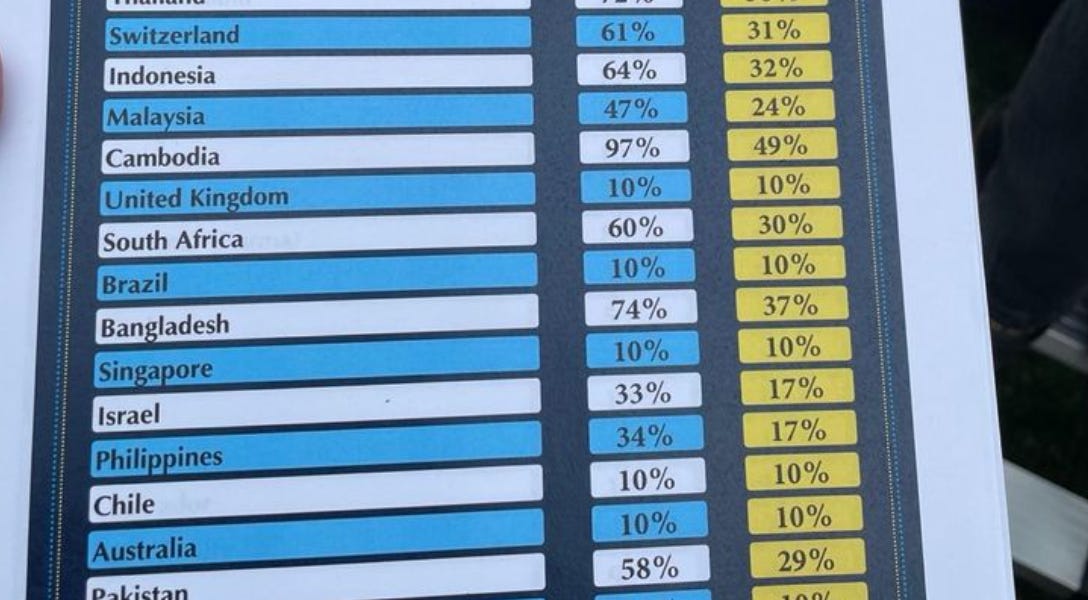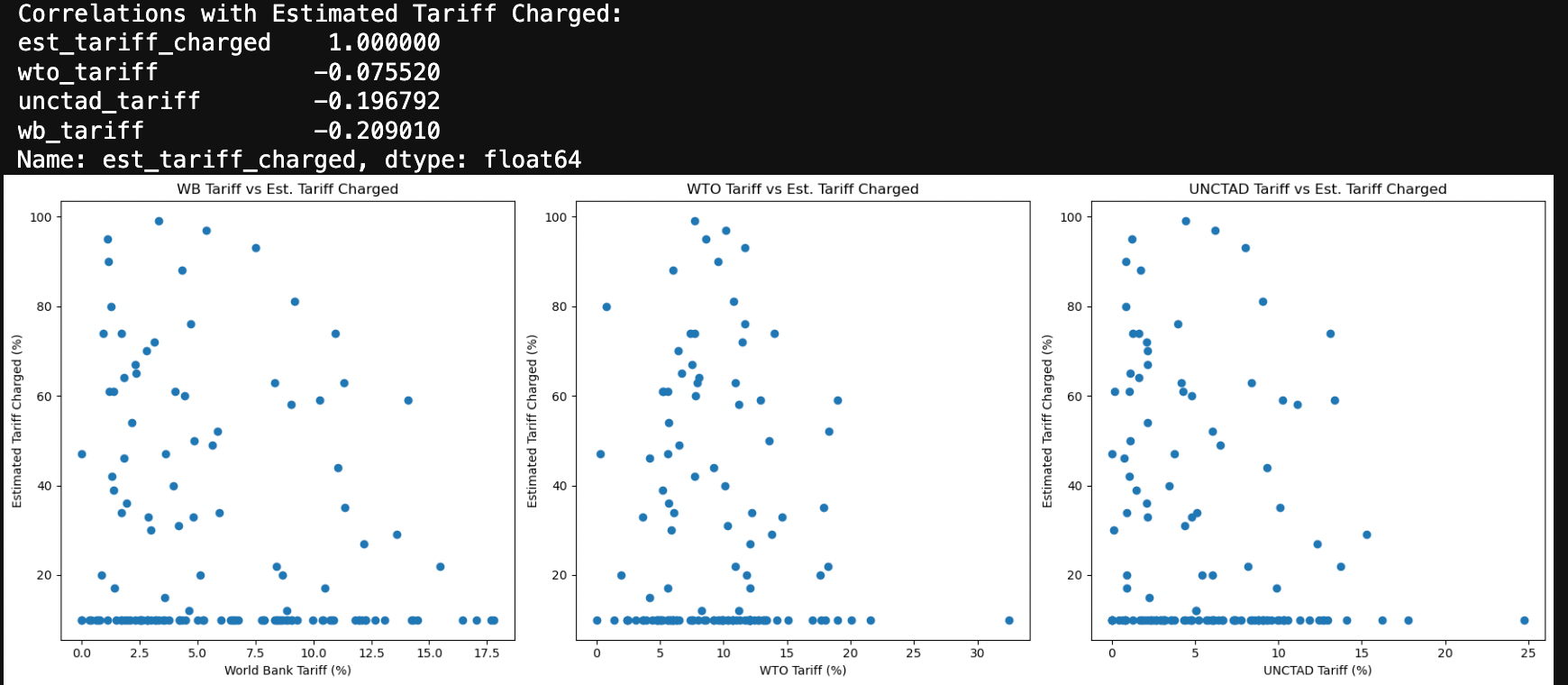Uncorrelated Tariffs

We know the means look a little off (not to say anything about the ends):
The EU, like the United States, has generally low tariffs; the average tariff it charges on US goods is less than 3 percent.
So where does this 39 percent number come from? I have no idea. Many people speculated that Trump would count value-added taxes as tariffs, even though they aren’t — European producers selling to the EU market pay the same VAT as US producers, so it doesn’t discriminate and therefore isn’t protectionist. But even if you get that wrong, EU VAT rates are in the vicinity of 20 percent, so you still can’t get anywhere close to 39 percent.
https://paulkrugman.substack.com/p/trump-goes-crazy-on-trade

See also: "The average U.S. tariff, weighted to reflect goods that are actually traded, is just 2.2% for the United States, versus the European Union’s 2.7%, China’s 3% and India’s 12%," according to the World Trade Organization via AP.
But how about the correlations? I tallied the correlation between the US administration's estimates of tariffs and the World Bank, WTO, and UNCTAD estimates (Wikipedia). The correlations are in the range of -.08 and -.2! So much for reciprocity.

So, where did the tariffs come from?

p.s. https://ustr.gov/issue-areas/reciprocal-tariff-calculations
The Greek letters cancel out: "The price elasticity of import demand, ε, was set at 4.....The elasticity of import prices with respect to tariffs, φ, is 0.25."
